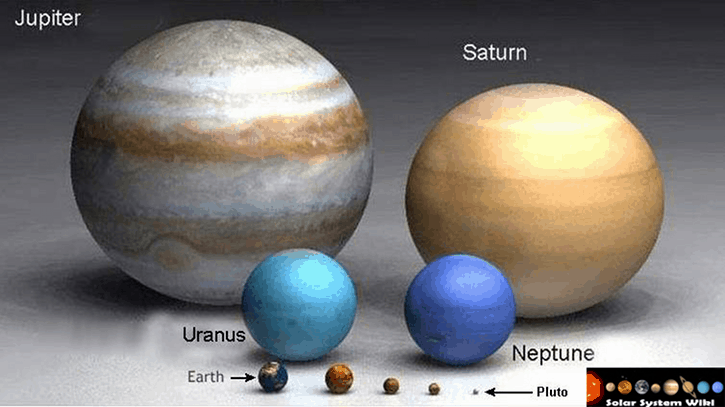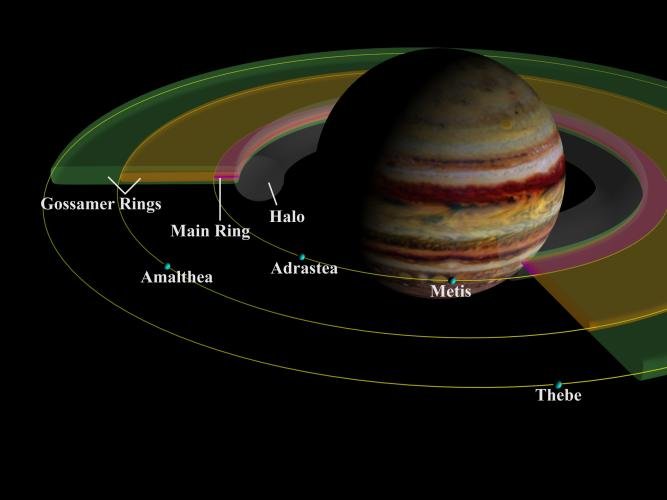Our solar system has eight planets with a lot many of planetoids, also referred to as dwarf planets. The most significant feature that allows us to call something as planet is that it has gravitational force, is big enough in size and orbits in the same plane. The largest planet in the solar system is Jupiter. As per Roman mythology Jupiter is named as the ruler of gods.
Planets
Here is a list of planets in order of their distance from the sun, the closest from the sun being on the top:
- Mercury
- Venus
- Earth
- Mars
- Ceres (dwarf planet sited in asteroid belt)
- Jupiter
- Saturn
- Uranus
- Neptune
- Pluto (Now considered as a dwarf planet)
- Eris, Makemake, Haumea, Sedna (these are dwarf planets — located past Pluto).
Jupiter is the largest planet in the solar system. Though the volume of the largest planet is 1400 times of earth, its mass is only 318 times. It means that its density is nearly one fourth of earth, indicating that the planet must comprise of gases and not rocks and metals which are found on earth and other inner planets.

Some interesting facts about the biggest planet: Jupiter
- Distance from Sun: Nearly 466 million miles.
- Diameter: 85,788 miles. It could contain more than 12 Earths or all other planets in the solar system within it.
- Composition: A giant ball comprising of mainly helium and hydrogen.
- Length of the Day: 9 hours, 55 minutes in Earth time (the duration of one rotation).
- Length of a Year: 12 Earth years (the duration of one orbit around the sun).
- Visited by: Pioneer 11, Viking, Galileo, Cassini and others.
Jupiter’s Spot
This biggest planet is characterized by a big red spot, called Jupiter’s Great Red Spot. In fact, this red spot is a massive storm which Jupiter has continued to bear since more than four hundred years. Three times the size of our earth, this red spot is the largest and most violent storm known to the universe. The winds of this storm can reach speeds of up to 270 miles per hour.

Being gaseous, Jupiter’s atmosphere is comparable to an ocean of gases. The currents taking place in the gases are like winds on earth and the cause of Jupiter’s constantly changing swirls. The winds are very colorful but we do not know the precise reason for that. Some attribute those colors to the fast speeds at which the planet rotate while others believe that it is due internal heat created in the planet. Scientific explanation that the colorful atmosphere is created due presence of phosphorus and sulfur in planet’s atmosphere sounds more convincing.
Rings on Jupiter

As a consequence of Voyager’s visit to outer planets of our solar system we realized that all planets containing gases have rings and Jupiter is no exception, though the rings in case of the largest planet in solar system are very thin and thus less visible.